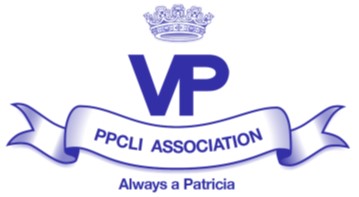PPCLI – A Brief History
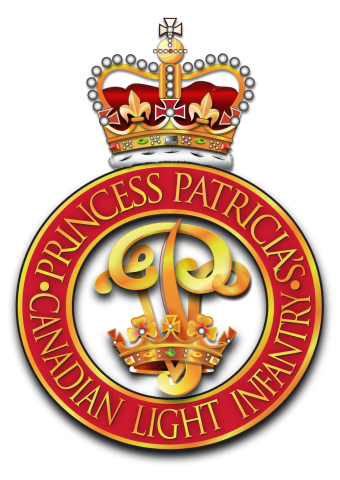
Princess Patricia’s Canadian Light Infantry was founded by an act of philanthropy as a result of the acceptance of the offer of Captain Andrew Hamilton Gault, a Montreal entrepreneur, on the 3rd of August 1914 to provide $100,000 to raise and equip a battalion for overseas service. PPCLI has served Canada and Canadians continuously since its founding in Ottawa on 10 August 1914.
Since then more than 1,850 Patricia’s have fallen in the service of Canada, in her wars, in peacekeeping and peace support operations in Canada and elsewhere. In addition, many thousands of other members of the Regiment have been wounded or injured through their service of Canada.
On 6th August 1914 Captain Gault’s offer was provisionally accepted by the Canadian Government. Authority was formally granted on 10th August (by way of a Report to the Privy Council of Canada (PC 2112)) to raise and equip an infantry battalion, with the remainder of the cost being defrayed by the Department of Militia and Defence.
On 10th August 1914 the Charter of the Regiment was signed and on the next day mobilization began. Eight days later, it was completed, as old soldiers flocked from every part of Canada to Lansdowne Park in Ottawa, where the Regiment was assembled. Out of 1,098 all ranks accepted into the new Regiment, 1,049 had seen previous service in South Africa or in the regular forces of the British Empire.
In addition to personnel from the Royal Navy and Marines, almost every unit in the British Army was represented.
Lieutenant Colonel Francis D. Farquhar, DSO, an officer of the Coldstream Guards who was Military Secretary to His Royal Highness, the Duke of Connaught and Strathearn, The Governor-General of Canada, was selected to command the new battalion. Farquhar suggested the Regiment bear the name of the Duke’s youngest daughter, Her Royal Highness Princess Patricia of Connaught. The request was made to the Princess, who graciously consented to the Regiment bearing her name.
The Light infantry came about because Captain Gault, a veteran of the South African War, liked the “irregular feel” it gave the Regiment. The full title of Princess Patricia’s Canadian Light Infantry was too long for everyday use, and the new unit became known as “PPCLI”, with “PP’s” or “Pip Pip’s”, the most common variants.
The Regiment was best known to the public as “Princess Pats” or merely the “Pats”, but this partial abbreviation is discouraged and the Regiment prefers to be known as the “Patricia’s”.
The Edmonton City Police Pipe Band had enlisted in Ottawa under a gallant old Highlander, Pipe Major C. Colville. Reporting in full Highland Kit with the Hunting Stewart tartan, they announced to the Colonel that they had come “to pipe you to France and back again”. Colonel Farquhar was able to take them into the Regiment and they lightened many a march for the Regiment and proved stouthearted stretcher bearers in action as well.
Being the first Canadian arms unit into battle in World War I, the Regiment began a history of service to the Nation that continues today.
The PPCLI have been in every major operation undertaken by Canada since including Sicily, Italy and Western Europe in World War II, Korea, Germany as a part of NATO, UN peacekeeping operations, Yugoslavia, and Afghanistan.
Domestically the Regiment has participated in numerous operations including the Olympics of 1976, 1988 and 2010, flood relief in the Red River Valley on several occasions, and the ice storms of 1998.
More than 1850 members of the Regiment have given their lives and countless others have suffered wounds or injury (in many cases resulting in permanent disability) from their service to Canada.
The Regiment’s mission today has not changed: to provide an excellent infantry regiment for service to Canada.
The serving component of the Regiment is currently located in Edmonton Alberta (1 PPCLI, 3 PPCLI and Regimental Headquarters), Shilo Manitoba (2 PPCLI) and several Patricia’s serving in various capacities throughout the Canadian Forces.
The retired component consists of members of the PPCLI Association in 13 branches located across Canada.
PPCLI Accomplishments
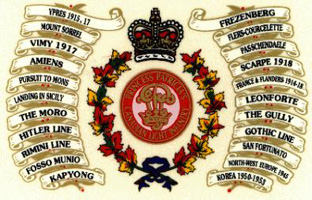
The PPCLI has 41 Battle Honours, including one for perpetuation, that were awarded for specific distinguished actions and general actions on active service in World War I, World War II and Korea.
Twenty-two of these Battle Honours are displayed on the Regiment’s Colours.
The PPCLI was awarded the Battle Honour, Siberia 1918-1919 in recognition of the deeds and sacrifices of the 260th Battalion (Canadian Rifles), a unit that served as part of the Canadian Expeditionary Force sent to Siberia in 1918.
This unit’s history and accomplishments are perpetuated by the PPCLI because many of the soldiers who served with this unit served with the Regiment during World War I.
PPCLI Battalions also carry a Wreath of Laurel affixed to the head of the pike of the Regimental Colour. This decoration was presented by Her Royal Highness Princess Patricia of Connaught on 21 February 1919 at St. Leger, Belgium. The Wreath bears the inscription “TO THE PPCLI FROM THEIR COLONEL-IN-CHIEF PATRICIA IN RECOGNITION OF THEIR HEROIC SERVICE IN THE GREAT WAR, 1914-1918.”
The PPCLI is the only Canadian unit to have a Standard, Colour or Guidon so decorated.
1 PPCLI
The 1st Battalion, Princess Patricia’s Canadian Light Infantry (1PPCLI) is located at Lancaster Park on CFB Edmonton in Alberta.
1PPCLI is a mechanized infantry battalion of the Regular Force and uses the LAV III (light armoured vehicle) as its primary fighting vehicle. The battalion is made of four rifle companies, one support company and one command and support company.
Operation Athena
Canadians were one of the leading combatants and the first fighting when the Battle of Panjwaii, Afhanistan, took place.
Complex mud-walled compounds made the rural Panjwaii district take on an almost urban style of fighting in some places. Daily firefights, artillery bombardments, and allied airstrikes turned the tides of the battle in favour of the Canadians.
For their actions, 1PPCLI and Task Force 1-06 were given the Commander-in-Chief Unit Commendation from the Governor-General of Canada.
2PPCLI
The 2nd Battalion, Princess Patricia’s Canadian Light Infantry (2PPCLI) is based at Kapyong Barracks on CFB Shilo, Manitoba.
The battalion is a mechanized infantry unit of the Regular Force and is part of the 1CMBG. The battalion is composed of three rifle companies (Alpha, Bravo and Charlie), one fire support company, and one command and support company.
The Second Battalion (2 PPCLI) was awarded the United States Distinguished Unit Citation for its actions at Kapyong, Korea on the night of April 24-25, 1950.
This award is recognized with a blue streamer embroidered”Kapyong, Korea,” which is fastened to the top of the pike of 2 PPCLI’s Regimental Colour. It is also recognized with a blue ribbon that is worn on both shoulders of the dress uniforms worn by 2 PPCLI soldiers.
2 PPCLI was awarded the Commander-in-Chief Unit Commendation for its courageous execution of duty during the Medak Pocket Operation, The Former Yugoslavia during the period September 15-16, 1993. This award was presented to the Battalion by the Governor General at Winnipeg on December 1, 2002. The award is represented by the Vice-Regal Lion that is affixed to the top of the staff carrying the Regimental Colour. The insignia of this award is worn by all of the soldiers who took part in the operation.
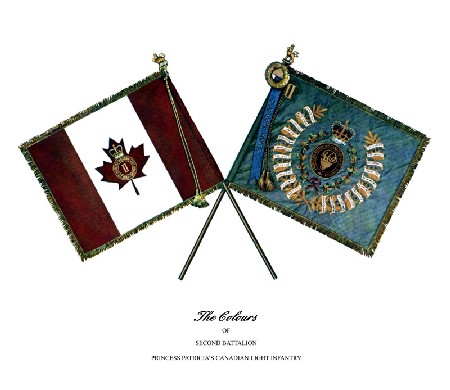
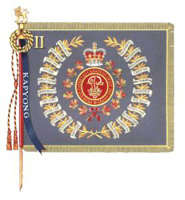
3PPCLI
The 3rd Battalion, Princess Patricia’s Canadian Light Infantry (3PPCLI) is based at Lancaster Park on CFB Edmonton, alongside the 1st Battalion.
The battalion is a light infantry unit of the Regular Force, and the only one in Western Canada. The battalion is composed of two rifle companies (airborne and mountain), a fire support company, and a command and support company.
The Third Battalion (3 PPCLI) was awarded the Commander-in-Chief Unit Commendation for its service in Afghanistan on Operation APOLLO from February 4 to July 30, 2002. This award was presented by the Governor General on parade in Edmonton on December 8, 2003.
4PPCLI (The Loyal Edmonton Regiment)
The 4th Battalion, Princess Patricia’s Canadian Light Infantry (4PPCLI), also known as the Loyal Edmonton Regiment, is the only Primary Reserve battalion of the PPCLI.
The unit, part of the 41 Canadian Brigade Group, is located at the Brigadier James Curry Jefferson Armoury, in Edmonton, Alberta.
PPCLI Battalions deployed to support United Nations and North Atlantic Treaty Organization operations in Germany, Cyprus, Bosnia-Hercegovina, Croatia, Kosovo, and Afghanistan.
Patricias have also served with the United Nations missions in Israel, the Golan Heights, Egypt, Lebanon, Kuwait, Iraq, the Congo, Vietnam, Central America, Angola, Somalia, Rwanda, Korea, Croatia and Bosnia.
In addition to the awards above, the PPCLI was awarded Freedom of the City in Calgary (1952), Esquimalt (1963), Victoria (1963), Ypres, Belgium (1964), Edmonton (1966), Winnipeg (1972), Ottawa (1985) and St. Albert (2001).
The PPCLI also responded to numerous emergencies in Canada, most notably:
Operation ASSISTANCE (Canadian Forces emergency assistance during the 1997 Red River Flood);
Operation RECUPERATION (the Canadian Forces emergency response to the Quebec Ice Storm in 1998);
Operation MOLLUSK (Canadian Forces emergency assistance to fight BC forest fires in 1998);
Operation GRIZZLY (the Canadian Forces operation to provide security for the G8 summit at Kannanaskis, Alberta in 2002); and
Operation PEREGRINE (Canadian Forces assistance to fight the British Columbia forest fires in 2004).
Alliances
![]() United Kingdom – The Rifles
United Kingdom – The Rifles
![]() Australia- The Royal Australian Regiment
Australia- The Royal Australian Regiment
![]() New Zealand – The Hauraki Regiment
New Zealand – The Hauraki Regiment
